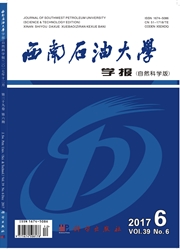

 中文摘要:
中文摘要:
某高含硫天然气净化厂原料气中H2S含量约为14%,CO2含量为8%,年处理量达120×10^8 m^3,因酸性组分含量高、产能负荷大,生产装置和设备面临严峻的腐蚀风险。针对该净化厂净化工艺特点,采用DG–9500型探针在每个联合的脱硫、脱水、硫磺回收、尾气处理、酸水汽提单位共布置了14个在线腐蚀监测点,通过为期1年的腐蚀监测,得出了各工艺节点的腐蚀程度,并结合腐蚀挂片结果,找出了高含硫天然气净化厂存在的腐蚀薄弱环节。腐蚀规律分析结果表明,该净化厂腐蚀薄弱环节主要集中在胺液再生系统、硫磺回收冷却系统以及急冷水系统,腐蚀类型主要包括全面腐蚀、局部腐蚀和点蚀。同时,在线腐蚀监测和腐蚀挂片所得腐蚀速率基本一致,说明采用的在线监测手段能有效地用于监测高含硫净化厂腐蚀状况。研究成果为高含硫净化厂腐蚀控制提供了重要依据。
 英文摘要:
英文摘要:
A high-sulfur natural gas purification plant can process 120×10^8 m^3 feed gas,in which the mole fraction of H2S and CO2 reach 14%and 8%,respectively. Production facilities and equipment in the high-sulfur natural gas purification plant are at severe risk of corrosion for the high content of acidic components and large capacity load. Considering the characteristics of the plant,we adopted the inductors(DG–9500)to monitor the corrosion in 14 detection points distributed in desulfurization, dehydration,sulfur recovery,tail gas treatment,sour water stripping unit. Through a one-year corrosion detection,we obtained the degree of corrosion in the process nodes,combined which with the corrosion coupon results,we found the corrosion weak-nesses of this gas purification plant. The results showed that the corrosion mainly occurred in the amine regeneration system, sulfur recovery systems and chilled water cooling systems. The corrosion types include general corrosion,localized corrosion and pitting. It was also found that the results obtained from inductive probes and corrosion coupons were almost the same, which indicates that the former detective method can be used to monitor the corrosion conditions effectively in the high-sulfur natural gas plants. The research provides an important basis for corrosion detection in the high-sulfur purification plants.
 同期刊论文项目
同期刊论文项目
 同项目期刊论文
同项目期刊论文
 期刊信息
期刊信息
